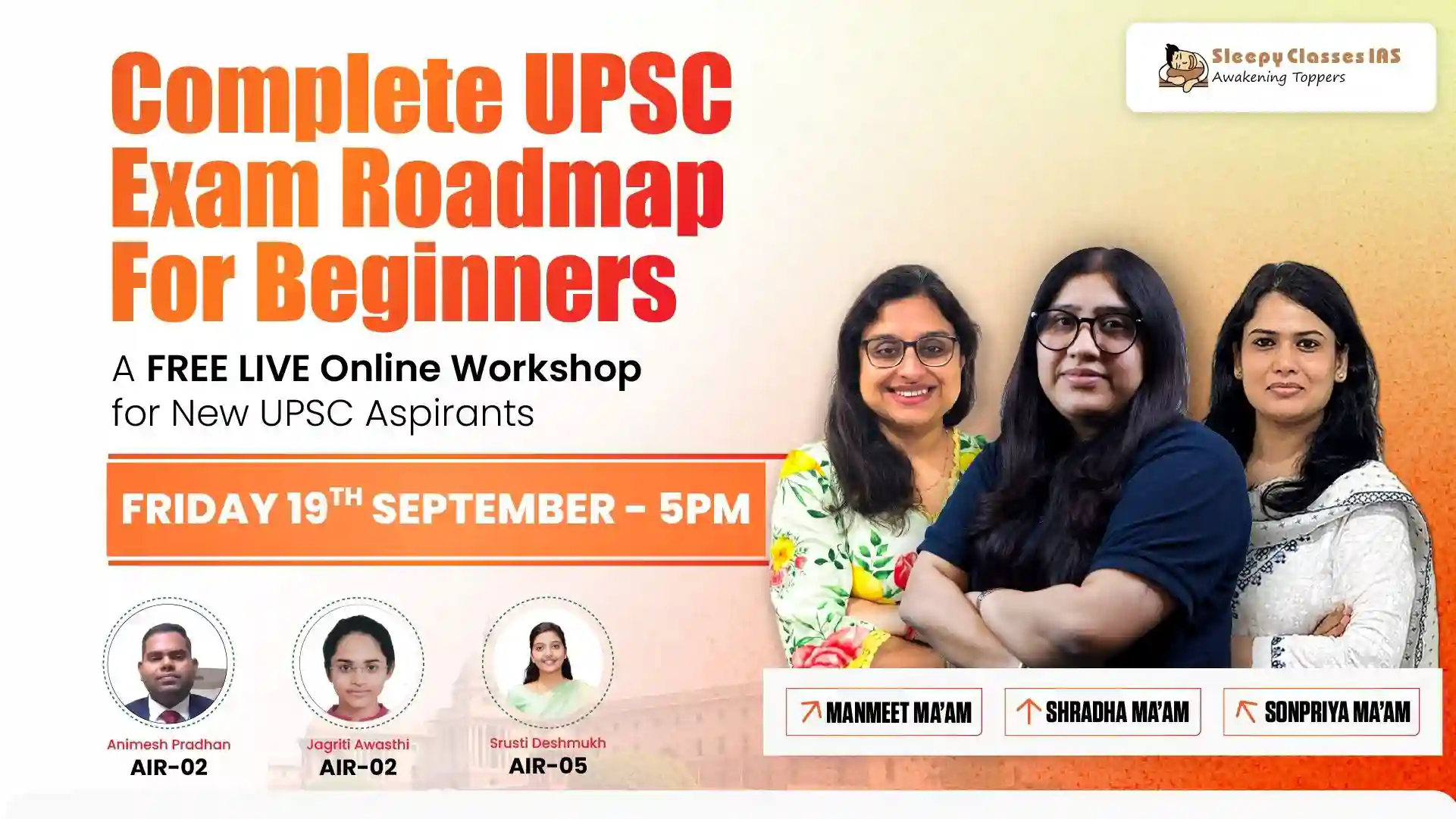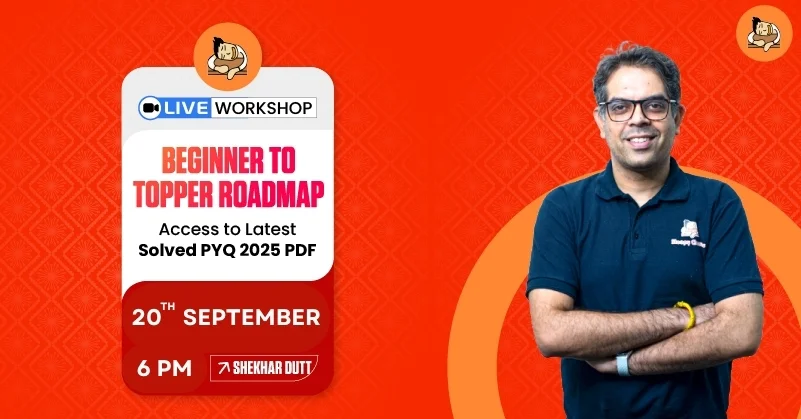Writing Balanced Answers for Governance Questions in GS Paper 2
Aptitude and Foundational Values for Civil Services, Editorials, ESSAY, UPPCS, UPSC, Using SleepyClasses
Governance is a critical segment of GS Paper 2 in the UPSC Mains examination. Questions in this section often test aspirants on their understanding of policy implementation, government initiatives, transparency, accountability, and citizen-centric governance. The key to scoring well lies in writing balanced, well-structured, and evidence-backed answers.
In this guide, we will discuss how to approach governance-related questions in GS Paper 2, the importance of balanced arguments, and the role of data, case studies, and constitutional provisions in enhancing your answers.
Key Takeaways
✅ Understanding Governance in GS Paper 2: Covers policy-making, transparency, accountability, and citizen participation.
✅ Balanced Approach: Integrate multiple viewpoints—government, public, civil society, judiciary, and international best practices.
✅ Use of Data and Reports: Reference ARC Reports, World Bank Governance Index, and NITI Aayog to substantiate answers.
✅ Case Studies: Quote RTI implementation, Digital India, MNREGA, and citizen charters to add credibility.
✅ Answer Writing Framework: Follow Intro-Body-Conclusion with structured presentation and flowcharts.
Understanding the Governance Section in GS Paper 2
Governance questions in GS Paper 2 test a candidate’s ability to critically analyze government policies, assess their implementation, and suggest improvements. The questions may be analytical, opinion-based, or related to recent government schemes.
The approach to GS Paper 2 governance questions should:
- Demonstrate constitutional and policy awareness (Article 14, 21, 39A, etc.).
- Use balanced arguments with multiple perspectives.
- Include data, reports, and real-world examples.
- Present structured answers using flowcharts and diagrams.
By following these principles, aspirants can ensure their answers align with UPSC’s demand for clarity, depth, and balanced perspectives.
How to Write Balanced Answers in GS Paper 2?
A well-balanced answer in GS Paper 2 should examine issues from multiple perspectives, ensuring that different stakeholders’ views are represented.
1. Understanding the Key Themes in Governance
Governance covers multiple aspects, including:
- Transparency & Accountability: RTI Act, Lokpal and Lokayukta, Citizen Charters.
- Participatory Governance: Digital India, E-Governance, Panchayati Raj.
- Social Welfare Schemes: Direct Benefit Transfers (DBT), MNREGA, Ayushman Bharat.
- Judicial and Executive Reforms: Tribunal reforms, police modernization, judicial pendency.
Each of these topics requires a nuanced and structured approach when writing answers.
📚 Where to Study?
- 2nd Administrative Reforms Commission (ARC) Reports – Best for governance-related recommendations.
- Ministry of Personnel, Public Grievances & Pensions Reports – Insights into administrative reforms.
- PRS India – Policy Briefs: Read Here
- NITI Aayog Governance Reports: Check Here
💡 Tip: Quote Economic Survey, World Bank Governance Indicators, and National Crime Records Bureau (NCRB) reports to substantiate answers.
2. Structuring Answers for Maximum Impact
A well-structured answer follows a logical Intro-Body-Conclusion framework.
📌 Introduction: Define the Concept with Context
Start with:
- A constitutional reference (e.g., Article 21 for transparency in governance).
- A recent government initiative (e.g., e-Governance under Digital India).
- A relevant report or statistic (e.g., World Bank’s Ease of Doing Business ranking).
Example Introduction:
“Good governance, as defined by the 2nd ARC Report, is characterized by transparency, accountability, and participatory decision-making. India, with initiatives like the RTI Act and Digital India, has made significant strides in governance, yet challenges remain in implementation and outreach.”
📌 Body: Provide a Balanced Perspective
The body should present both sides of an argument while integrating examples, data, and diagrams.
For Example: “Role of E-Governance in Transparency”
✅ Positives:
- Reduces corruption (Digital India, DBT eliminating middlemen).
- Increases accessibility (UMANG app for government services).
- Cost-effective (Online RTI applications reduce paperwork).
❌ Challenges:
- Digital Divide (Rural internet penetration only 37% as per TRAI).
- Cybersecurity Concerns (Recent CoWIN data leak raised privacy fears).
- Bureaucratic Resistance (Slow adoption of e-offices in many ministries).
📌 External Resources for Governance
🔗 World Bank Report on Governance Indicators: Explore Here
🔗 Transparency International’s Corruption Perception Index: Check Here
📌 Conclusion: Suggest the Way Forward
End with a constructive approach—policy recommendations, government initiatives, or best practices.
Example Conclusion:
“While India has embraced governance reforms, bridging the digital divide and strengthening data privacy laws are crucial next steps. Implementing recommendations from the ARC reports and learning from global best practices, such as Estonia’s digital governance model, can further improve India’s governance framework.”
💡 Tip: Always end on a positive note, suggesting practical and feasible solutions.
Using Case Studies to Strengthen Answers in GS Paper 2
Case studies add authenticity and depth to answers. Here are some examples:
📌 Right to Information (RTI):
- Case Study: RTI exposed corruption in the Adarsh Housing Scam.
- Balanced Perspective: While RTI enhances transparency, issues like delayed responses and misuse exist.
📌 Digital India & E-Governance:
- Example: Andhra Pradesh’s Real-Time Governance Society (RTGS) improves service delivery.
- Challenge: Digital literacy and cybersecurity risks need more attention.
📌 Judicial Reforms:
- Example: Virtual courts during COVID-19 reduced case backlog.
- Limitation: Not all litigants have digital access.
Using these examples enhances the depth and credibility of answers.
📚 Where to Find More Case Studies?
🔗 PRS Legislative Research – Case Studies on Governance: Read Here
🔗 United Nations Public Service Awards (Best Governance Practices Worldwide): Check Here
Final Thoughts
Writing balanced answers in GS Paper 2 requires a multi-dimensional approach. Candidates must quote relevant constitutional provisions, integrate policy references, use structured frameworks, and substantiate arguments with data and case studies.
To enhance your preparation, explore structured courses, test series, and answer-writing programs at UPSC Mains Courses.
By practicing evidence-based, well-structured, and balanced answers, aspirants can maximize their scores in GS Paper 2 and boost their overall UPSC rank.
🚀 Start Practicing Today & Master Governance in GS Paper 2!




